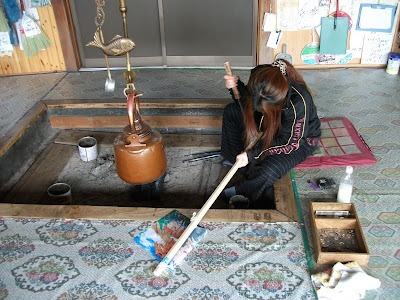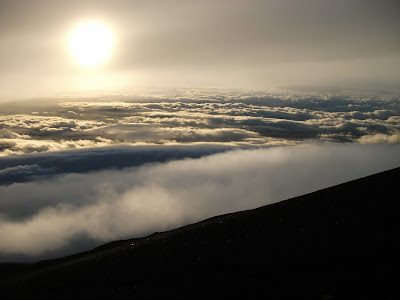The picture that accompanies this post is a little geeky, I freely admit, but it is also a good opportunity to give another perspective to my ICT travel experiences.
Attached to my daily "manbag" (which all men in Japan carry, foreigners too), I have admittedly gone overboard with the number of ストラップ (decorations for mobile phones or keyrings), total of nine, but they chronicle my ICT travels; allow me to describe them to you:
-The first one is the round jade disc hanging from the red string. Bought it in Xian, China, from a poor, dirty, local lady hanging out in a parking lot, for about $2. The same pendant cost $13 in the Xian Terra Cotta Warriors Museum gift shop. Ah, China...
-The second one is the rectangle with the map of Korea bought at the DMZ gift store. It is solar powered and that LCD display always blinks on and off, envisioning unification of North and South.
-The third is the small rectangle with the Russian Federation flag, which on the other side displays a small outline map of Sakhalin province, including the disputed Kuril islands that remain a controversy with Japan.
The remaining six were all bought in Japan, and describe different aspects of the culture. In order from left to right, then:
-The little black rectangle with pictures was bought in Okinawa, and the other side has a phrase written in the local Okinawan dialect that says, "never give up," and the Okinawans never will.
-The blue circle that says "Blue Seal" is the logo of the Foremost Blue Seal ice cream, which started as an American company right after WWII but was fully developed in Okinawa and has become very successful there and in mainland Japan. Terrific ice cream in flavors not to found anywhere else.
-The metallic key chain with Mt. Fuji is when I climbed Mt. Fuji, bought it at the summit gift store. 'Nuff said.
-The three yellow train cars are probably my favorite. This charm is sold by the local train company, Seibu Rail, at our local train station. And yes, our local train is always yellow.
-The little duck-like figure is a cartoon character created by the Japan Sumo Association for this season, one of a cast of characters to promote the sumo season. Most Japanese sports or business ad programs feature cartoon characters.
-And the last one is maybe the wildest, but I can't resist wearing it. It is what it looks like- a cupie doll kamikaze pilot. I bought it at the Yasukuni Shrine gift store; this is the national Shinto shrine where the nation's military heroes are registered and "deified" in Shinto ceremony. Now, militarism in Japan is certainly not rampant, but it can pop up in unusual places. Here is a pic of the backing that came with the charm, and it is worth looking at:
 |
So here is what the Japanese says above the figure:
"Certain Victory Japan
Strongest Stalwart Youth of the Rising Sun
Zero Fighter Plane Crew Member"
Interesting, no? |
Finally, above all the charms you may notice a button that says "NF" on it. I bought that in Hiroshima in a Peace Memorial Park gift shop. It is all in English, and around the big letters it reads, "Nuke Free Since 1945. Peace from Hiroshima, Japan." Indeed...maybe once they stop using nuclear power for a quarter of their city's energy they can declare themselves nuke free.
And there they all are. A long post, but they remind me of how interesting, complex, and often humorous the Northeast Asia region is. Thanks for reading!






























































